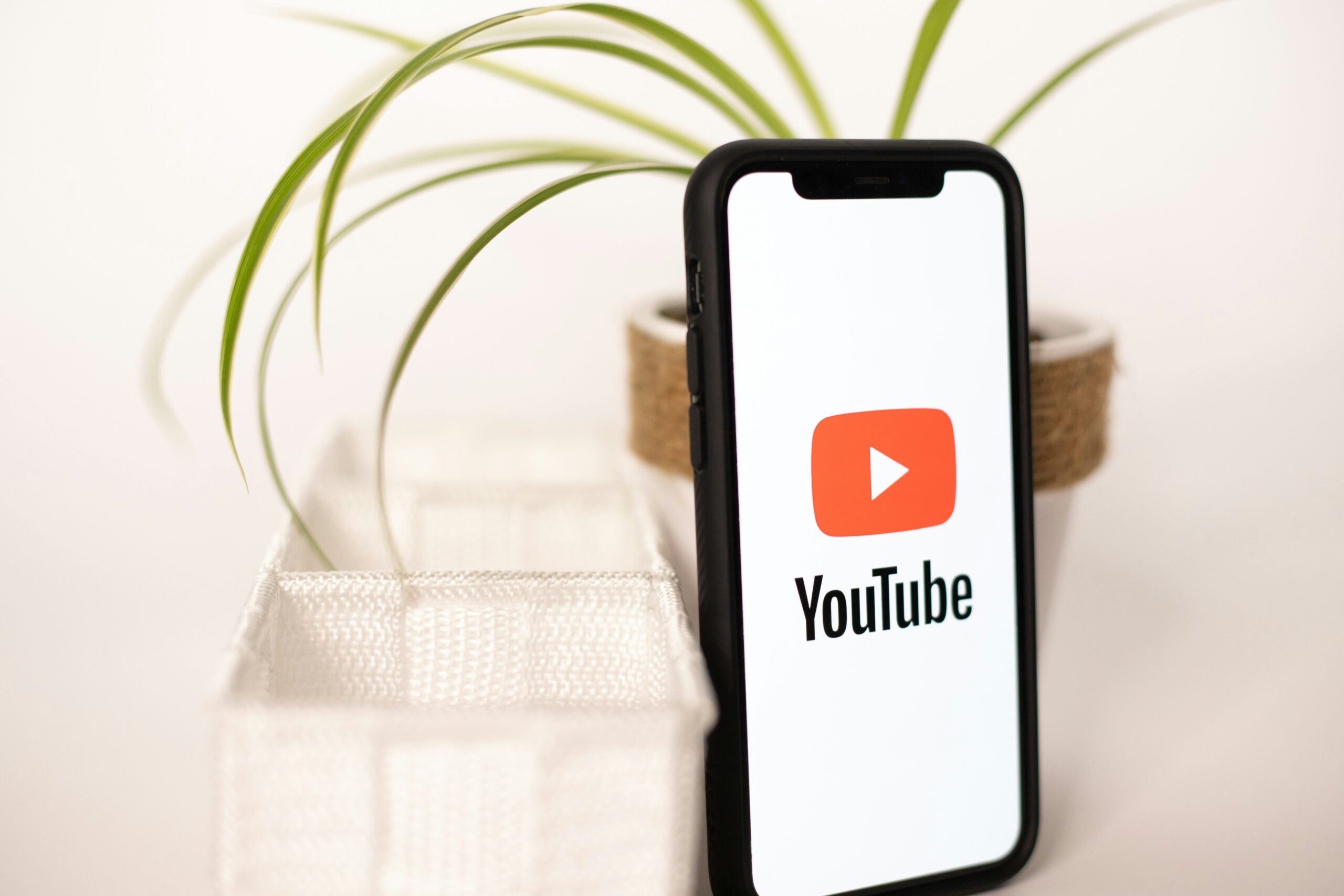
Photo by <a href="https://unsplash.com/@collabstr" rel="nofollow">Collabstr</a> on <a href="https://unsplash.com/?utm_source=hostinger&utm_medium=referral" rel="nofollow">Unsplash</a>
Understanding Influencer Marketing
Influencer marketing is a form of marketing that focuses on using key individuals to drive a brand’s message to the larger market. Rather than marketing directly to a large group of consumers, brands leverage the influence of individuals who have a dedicated following and can impact the purchasing behavior of their audience. This strategy has grown significantly with the emergence of social media platforms, which have not only transformed communication but also the methods by which brands engage with potential customers.
The origins of influencer marketing can be traced back to traditional celebrity endorsements. However, with the rise of platforms like Instagram, YouTube, and TikTok, the landscape has evolved dramatically. Brands have begun to shift from relying solely on celebrity endorsements to engaging micro and nano influencers—individuals with smaller, yet highly engaged followings. This shift is primarily due to the authenticity and relatability these influencers bring, making it easier for brands to connect with their target audiences.
As this strategic shift progressed, it became clear that the effectiveness of influencer marketing is not solely dependent on the number of followers an influencer possesses. Factors such as audience engagement, authenticity, and the influencer’s alignment with the brand values play a crucial role in determining the success of these marketing campaigns. Brands are increasingly interested in cultivating relationships with influencers who genuinely resonate with their products, thus creating a more organic and effective marketing approach.
The evolution of influencer marketing showcases a broader trend away from traditional advertising methods, emphasizing the need to adapt to changing consumer behaviors. As consumers become savvy and discerning, they increasingly prefer authentic recommendations from relatable figures over conventional advertisements. This paradigm shift underscores the importance of understanding influencer marketing in navigating today’s digital landscape.
Types of Influencers
Influencer marketing has gained traction in recent years, bringing forth various types of influencers who cater to different audiences and niches. Broadly, influencers can be categorized into four main types: mega, macro, micro, and nano influencers. Each category possesses distinct characteristics that can significantly impact marketing strategies.
Mega influencers are individuals with a vast social media following, typically exceeding one million followers. They are often celebrities or well-known public figures, such as actors or musicians. Collaborating with mega influencers can provide brands with significant visibility and reach. However, partnering with them often comes at a high cost, and their audiences may be less engaged, as followers may connect more with the influencer’s celebrity status than with the content.
Macro influencers fall into the range of 100,000 to one million followers. They often possess a specific niche or expertise, making them a preferred choice for brands seeking to target a more defined audience. Macro influencers generally have higher engagement rates compared to mega influencers, which can lead to more authentic interactions. However, their pricing is also considerable, and brands may find it challenging to measure the direct impact of their campaigns.
Micro influencers, who have between 1,000 and 100,000 followers, typically engage with a more audience-specific niche. Their followers are often loyal and highly engaged, allowing for a genuine dialogue between the influencer and their audience. This close-knit community results in higher conversion rates, making micro influencers an attractive option for brands with limited budgets. On the downside, their smaller audience may lead to a lesser reach compared to larger influencers.
Nano influencers, with fewer than 1,000 followers, represent a burgeoning segment of the influencer market. Despite their smaller follower count, they tend to have exceptionally high engagement levels and deep connections with their audience. Collaborating with nano influencers is often cost-effective, and brands can benefit from tailored messaging. However, the limited reach may be a concern for brands looking to establish wide-scale visibility.
Choosing the Right Influencer for Your Brand
In the evolving landscape of influencer marketing, selecting the right influencer is critical to amplifying your brand’s message and achieving desired marketing outcomes. The first step in this process is assessing an influencer’s alignment with your brand values. An influencer whose beliefs and themes resonate with your organization is more likely to connect authentically with their audience and represent your product effectively.
One of the key indicators of a successful influencer for your brand is their engagement rate. This metric speaks volumes about the influencer’s relationship with their followers. A high engagement rate suggests that the influencer’s audience is not only listening but actively interacting with their content. It is essential to analyze metrics such as likes, comments, shares, and mentions to gauge real engagement rather than relying solely on follower counts, which can be misleading.
Authenticity is another crucial factor. Today’s consumers are discerning; they are likely to spot insincerity or overly promotional content. Investigate if the influencer has a consistent voice and narrative that matches your brand’s ethos. This consistency fosters trust among their followers, making them more receptive to recommendations. Tools such as follower demographic analysis and audience sentiment tracking can further aid in confirming the influencer’s credibility and relevance.
Relevance to your target audience cannot be overstated. Engaging with influencers who have followers that mirror your ideal customer profile enhances the likelihood of conversion. Thoroughly examine the influencer’s content to ascertain if it resonates with your audience’s interests and needs. Taking the time to carefully evaluate these elements ensures that the influencer you choose not only enhances your brand visibility but also contributes to an authentic and engaging narrative that aligns with your overall marketing strategy.
The Impact of Influencer Marketing on Consumer Behavior
Influencer marketing has emerged as a powerful tool in shaping consumer behavior in the digital age. Studies show that consumers are increasingly turning to social media influencers for product recommendations, often valuing these endorsements more than traditional advertising. According to a recent survey, approximately 49% of consumers rely on influencer recommendations when making purchasing decisions. This statistic highlights the growing trust placed in influencers, as they are perceived as authentic voices within their niche markets.
Case studies further illustrate the positive impact of influencer marketing on brand perception and sales. For instance, a leading cosmetics brand partnered with a prominent beauty influencer to launch a new product. This collaboration resulted in a staggering 300% increase in the product’s online sales within the first week of the influencer’s endorsement. Such examples underscore the effectiveness of influencer marketing in driving immediate consumer interest and purchases, as influencers often create engaging content that resonates with their audience.
Moreover, the emotional connection that influencers foster with their followers plays a crucial role in influencing purchasing behavior. Their ability to share personal stories and experiences related to products creates a sense of relatability, making consumers more likely to trust the recommendations provided. This trust translates into increased brand loyalty, with 70% of millennials reportedly being influenced by their favorite influencers when deciding on new products to try.
Furthermore, the rise of platforms such as Instagram and TikTok has transformed how brands approach marketing strategies. Brands now prioritize collaborations with micro and nano influencers, who often boast higher engagement rates, leading to more meaningful connections with audiences. These influencers can significantly impact consumer behavior by creating tailored content that speaks directly to their follower demographics.
Crafting a Winning Influencer Marketing Campaign
Creating an effective influencer marketing campaign requires a strategic approach that integrates various components to ensure success. The first step in this process is to establish clear and specific campaign goals. These objectives may include increasing brand awareness, boosting engagement, or driving sales. By defining what success looks like, marketers can tailor their efforts to meet these outcomes effectively.
Once the goals are set, the next step involves selecting the appropriate platform to reach the target audience. Different social media platforms attract various demographics, and understanding where the target audience predominantly resides is crucial. For instance, platforms like Instagram and TikTok are popular among younger users, while Facebook might appeal more to an older demographic. This platform choice will dictate not only the influencer selection but also the type of content that will resonate with the audience.
With the platform chosen, attention shifts to developing compelling and creative content. This includes brainstorming ideas that align with the brand’s message while also appealing to the influencer’s audience. Collaborating with the influencer during this stage is essential to ensure authenticity and relatability. Influencers have a unique understanding of their audience, and their insights can help cultivate a campaign that feels organic rather than forced.
Lastly, measuring performance is integral to any influencer marketing campaign. Employing metrics such as engagement rates, click-through rates, and conversion statistics allows marketers to gauge the effectiveness of their initiatives. This data not only helps in assessing the impact of the campaign on the set goals but also provides valuable insights for future campaigns. By understanding what works and what does not, businesses can refine their strategies for optimal results.
The Role of Authenticity in Influencer Partnerships
In recent years, the landscape of influencer marketing has evolved significantly, making authenticity a critical component of successful partnerships. As consumers become more adept at navigating the digital space, they increasingly prioritize authenticity and genuine connections over polished marketing campaigns. This shift in consumer behavior necessitates a strategic approach from brands looking to engage with influencers effectively. It also means brands must work diligently to foster authentic relationships with their influencers.
One of the primary reasons authenticity has gained such prominence is due to the proliferation of social media. Countless platforms provide consumers with immediate access to influencer content, which has led to heightened scrutiny of the messages being conveyed. Today’s consumers are well aware of promotional content, and they often perceive influencer endorsements as less credible if they suspect that the partnership is not authentic. This skepticism stems from the expectation that influencers should align with brands that genuinely resonate with their personal values and lifestyles, rather than simply endorsing products for monetary gain.
To navigate this new age of digital influence successfully, brands need to seek out influencers whose ethos aligns with their values. By engaging in thorough vetting processes and investing in long-term relationships, brands can create more authentic partnerships that resonate with their target audiences. Moreover, allowing influencers the freedom to communicate in their authentic voice enables them to share personal experiences with the products or services, fostering trust and engagement from their followers.
Ultimately, authenticity in influencer partnerships not only benefits the consumer but also elevates the brand’s reputation. When consumers feel a genuine connection through influencer content, they are more likely to trust the brand and, subsequently, make purchasing decisions that reflect that trust. Therefore, establishing authenticity should be a priority for brands aiming to leverage the power of influencer marketing effectively.
Challenges of Influencer Marketing
While influencer marketing has emerged as a robust strategy for brands seeking to engage new audiences, several challenges can pose significant risks to its efficacy. One of the most glaring issues is the potential for influencer scandals. The public scrutiny that influencers face means that even a small misstep can lead to a significant backlash, which can adversely affect brand reputation. For instance, if an influencer is involved in a controversial situation, their affiliated brands may also suffer from negative perceptions, making it crucial for brands to conduct thorough due diligence before partnering with any influencer.
Another challenge stems from the ever-changing algorithms of social media platforms. These algorithms influence how content is displayed to users, impacting engagement rates and the overall effectiveness of influencer campaigns. As platforms evolve, brands must remain adaptable, continuously reassessing their strategies to ensure visibility and engagement levels. This necessitates a proactive approach, including ongoing analysis of content performance and audience feedback to refine influencer partnerships accordingly.
Moreover, legal regulations surrounding influencer marketing are increasingly stringent. Issues such as disclosure of paid partnerships and compliance with advertising standards require brands to ensure that their influencers adhere to legal guidelines. Failure to comply can lead to significant penalties, impacting both the brand and the influencer involved. To mitigate these risks, it is essential for brands to develop clear contracts and maintain open lines of communication with their influencer partners, allowing for regular updates on compliance matters.
Overall, navigating these challenges requires strategic planning and ongoing management of influencer relationships to ensure successful and sustainable campaigns in the dynamic landscape of digital influence.
Measuring Success in Influencer Marketing
Measuring the success of influencer marketing campaigns is crucial for understanding their effectiveness and optimizing future strategies. Various metrics and tools serve as key performance indicators (KPIs), enabling brands to analyze the impact of their marketing efforts. One primary metric is engagement rate, which reflects the level of interactions—likes, shares, comments—an influencer’s content garners. A high engagement rate typically indicates that the audience finds the content relatable and valuable, suggesting that the partnership is on the right track.
Another significant metric is reach, which denotes the total number of unique users who view an influencer’s content. This helps brands gauge the potential audience size and overall visibility of their campaigns. By assessing reach in conjunction with engagement, marketers can evaluate whether their messages resonate with the intended demographics, thereby ensuring that their targeting strategies are effective.
Conversions are also a vital metric, as they directly contribute to a brand’s bottom line. This is measured by tracking actions taken by users, such as subscriptions, downloads, or purchases resulting from influencer promotions. Implementing unique tracking links and discount codes can facilitate more accurate conversion tracking, providing insight into which influencers drive the best results for the brand.
Finally, return on investment (ROI) is a crucial financial metric. Calculating ROI involves comparing the revenue earned through an influencer marketing campaign against the costs associated with it. This analysis helps brands determine the financial viability of their influencer partnerships and make informed decisions about future investments. By leveraging these KPIs—engagement rates, reach, conversions, and ROI—brands can effectively measure and enhance the success of their influencer marketing initiatives.
The Future of Influencer Marketing
As the digital landscape continues to evolve, the future of influencer marketing appears promising yet complex. One significant trend on the horizon is the integration of artificial intelligence (AI). AI has the potential to transform how brands identify and collaborate with influencers. By harnessing advanced algorithms, companies can analyze vast amounts of data to ascertain influencers who align closely with their target audience’s preferences and behaviors. This not only streamlines the influencer selection process but also enhances campaign effectiveness through tailored content strategies.
Moreover, changes in consumer behavior are likely to have a considerable impact on influencer marketing. As audiences become increasingly discerning, they are gravitating towards authenticity and relatability. This shift indicates that micro and nano influencers, who often cultivate deeper connections with niche audiences, could see a surge in popularity. Brands may prioritize partnerships with these smaller influencers to build trust and credibility, which are essential components in driving consumer loyalty and engagement.
The rise of virtual influencers also marks a fascinating development in this field. These computer-generated personas can influence consumer decisions just as effectively as real individuals, presenting a unique opportunity for brands. The flexibility and control that virtual influencers provide mean that they can be designed to precisely fit brand identities and values, allowing for consistent messaging across various platforms.
Lastly, as influencer marketing matures, it is expected to encounter stricter regulations. Governments and regulatory bodies may introduce guidelines to ensure transparency and ethical practices in sponsored content. Marketers will need to adapt to these changes to maintain compliance and foster consumer trust. Overall, the future of influencer marketing will be characterized by innovative technologies, evolving consumer expectations, and a regulatory landscape that prioritizes ethical standards and authenticity.




